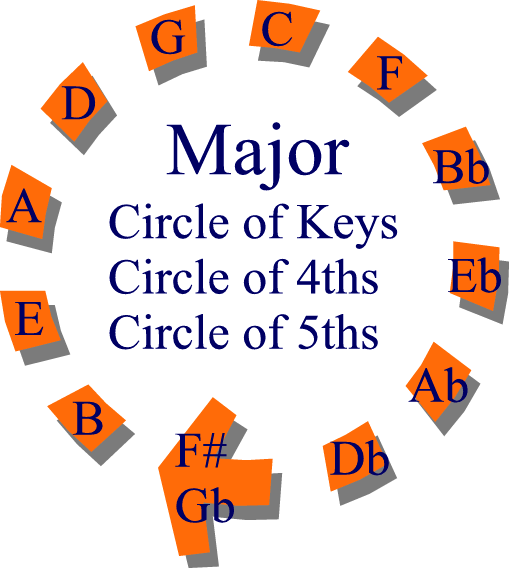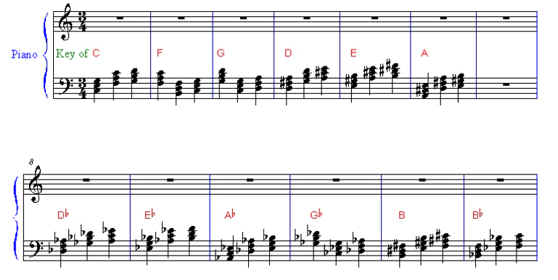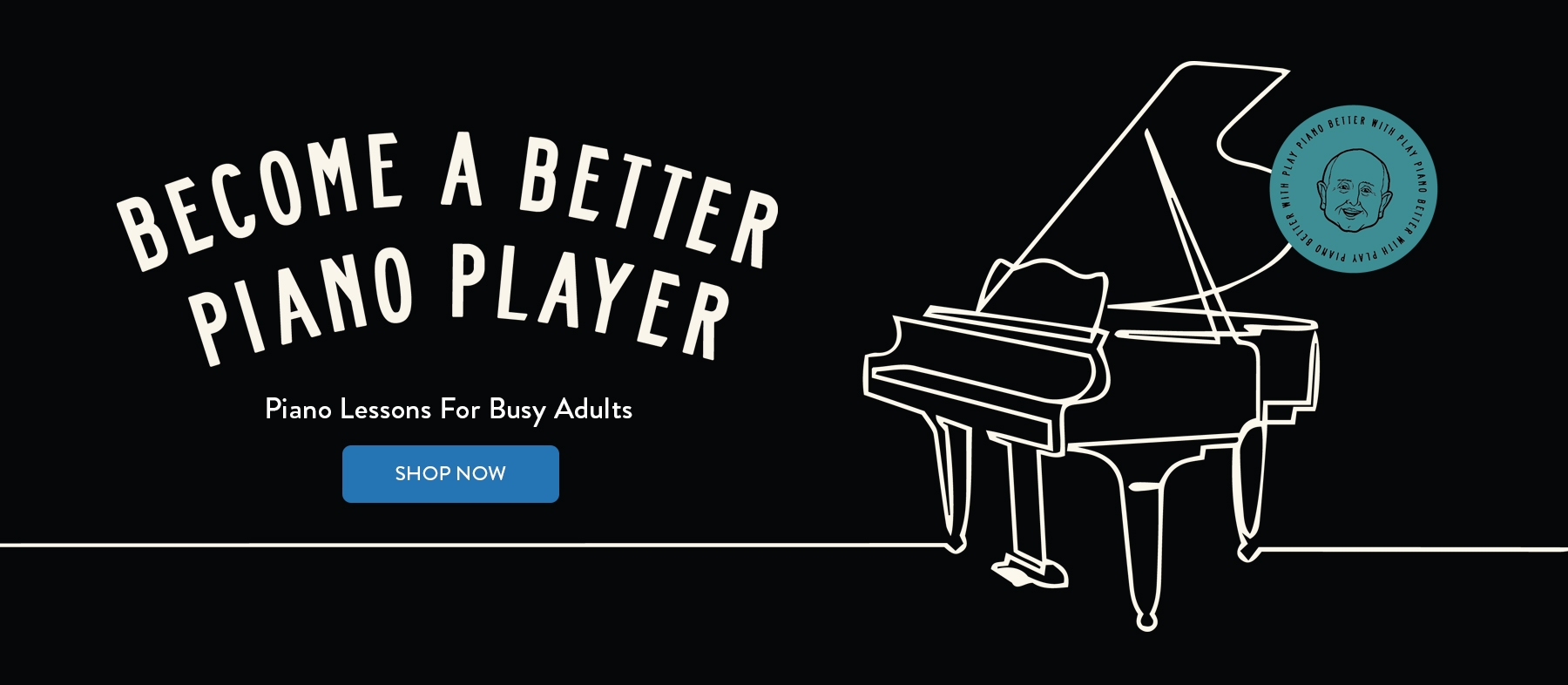Secrets of Exciting Chords & Chord Progressions: Lesson Twenty
Chord Progressions Part One:
The Circle of Keys – Major
If you’ve ever heard of the “circle of 4ths” or the “circle of 5ths”, they are the same thing as the “circle of keys”. It just depends on whether you’re moving clockwise or counter-clockwise around the circle.
All the major keys that you can play in — 12 of ’em — are listed in this circle. Take a look for yourself:
Major Keys: C F Bb Eb Ab Db Gb B E A D G

So “C” is at the top of your circle, and Gb (same as F#) is at the bottom of your circle.
Now memorize that circle. You’ll soon notice that each letter is a 4th above the previous letter — hence, the “circle of 4th”. Or if you go the other way, you’ll soon notice that each letter is a 5th above the previous letter — hence, the “circle of 5ths”.
This is the way chords “want” to move — up a 4th. Or up a 5th. You will find those to be the most common chord progression of all — up a 4th from the previous chord, or up a 5th from the previous chord.
For example, if the chord you are playing is C, the most likely chord to occur next is either F or G. You will notice that F comes directly to the right of C on the circle, and G directly to the left. (And you do remember, don’t you, that C, F, and G are the “family chords” of the Key of C? — the primary chords — therefore, the most likely chords to occur? — Now you know why!)
So that means that at any point on the circle you can immediately know the most likely chords — the chord to the left, and the chord to the right! Here’s a quiz:
What are the 3 most likely chords in the key of Db?
Right.
Db (of course), plus the chords on either side of it — Ab and Gb.
So what we come out with is this — the most likely chords in each key:

Do you see what an enormous advantage this gives you? You have a highly educated guess what chords are going to occur in the song you are playing based on the key that the song is written in. Not only that, you now know that chords like to either move up a 4th or a 5th (or down a 4th or 5th — same thing).
And so as we begin learning chord progressions, this is the first step — memorize the circle above until you can say it forward and backward and upside down and in your sleep! If I were you, I would print it out and stick it up on your piano or bathroom mirror or wherever you would see it often — it’s that important.
That’s all for this time.
Next time we’ll take a look at the Circle of Minor Keys — giving you the same insight in any minor key.
Thanks and blessings.
Duane



